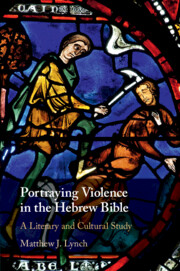Book contents
- Portraying Violence in the Hebrew Bible
- Portraying Violence in the Hebrew Bible
- Copyright page
- Publisher’s note
- Dedication
- Contents
- Acknowledgements
- Abbreviations
- Introduction
- Part I Violence and Ecology
- Part II Violence and Moral Speech
- Part III Violence and Justice
- Part IV Violence and Impurity
- 9 Violence and the Problem of Impurity
- 10 The Rhetoric of Violence and Impurity
- Conclusion
- Appendix
- Bibliography
- Index
9 - Violence and the Problem of Impurity
Key Texts
from Part IV - Violence and Impurity
Published online by Cambridge University Press: 06 May 2020
- Portraying Violence in the Hebrew Bible
- Portraying Violence in the Hebrew Bible
- Copyright page
- Publisher’s note
- Dedication
- Contents
- Acknowledgements
- Abbreviations
- Introduction
- Part I Violence and Ecology
- Part II Violence and Moral Speech
- Part III Violence and Justice
- Part IV Violence and Impurity
- 9 Violence and the Problem of Impurity
- 10 The Rhetoric of Violence and Impurity
- Conclusion
- Appendix
- Bibliography
- Index
Summary
Chapter 9 begins Part IV of the book, which analyses violence as a problem of impurity. This chapter focuses on what the grammar of impurity enabled biblical writers to say about the affront of violence. It draws on the ritual insights of Catherine Bell (via William Gilders), the metaphor theory insights of Joseph Lam, and the cognitive research of Thomas Kazen and Richard Beck. Psalm 106 describes the impure consequences of ‘mixing’ with the nations that Israel failed to expel from the land. Practices like child sacrifice polluted the land and people, and led to exile. Bloodshed, in this poetic retelling, disintegrated the sacred order that bound together Yhwh, the people, and the land. Isaiah 1 insists that entrance into Yhwh’s presence demanded social as well as ritual purity, and even suggests social means of ‘purifying’ from bloodshed. Lamentations 4 attributes exile to the bloodshed in the ‘midst’ of Jerusalem, and describes the people as those defiled among the nations. For Ezekiel, bloodshed was an affront to Yhwh’s name and sanctity in the land. Finally, according to Numbers 35, blood from homicides polluted the land. As such, it was a threat to the ongoing presence of Yhwh in the land.
Keywords
- Type
- Chapter
- Information
- Portraying Violence in the Hebrew BibleA Literary and Cultural Study, pp. 230 - 250Publisher: Cambridge University PressPrint publication year: 2020



